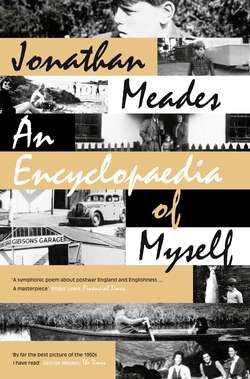Читать книгу An Encyclopaedia of Myself - Jonathan Meades, Jonathan Meades - Страница 11
AYLESWADE ROAD
ОглавлениеJohn Morton’s microbiological research was into the viability and infection rates of airborne microorganisms and radioactive spores. Many of his trials were necessarily conducted at sea in the approved gung-ho manner of the day. Like many other middle-aged Porton Down scientists of the Fifties facing an impoverished future he joined what would, in the next decade, become known as the brain drain to the United States, land of plenty, land of handsomely rewarded weapons technologists, land of modernity, streamlining, dams, freeways, cars with fins, cars with gurning radiator grilles, square watches, observation cars, air conditioning, Kodaslide Highlux projectors, teen camps (Adirondack Woodcraft, Western Caravan and Ranch, Gay Valley). But also, puzzlingly, land of the Wild West. How could that be?
He prospered, eventually took American citizenship. His wife Peggy didn’t. After their divorce she returned to England with their son and their pretty twins, dizygotic girls who were readily distinguishable and who I was convinced were not real twins but impostors, perpetrators of an incomprehensible deception.
The Goddard twins, monozygotic boys, were real twins. I couldn’t tell which was which. Identification was exacerbated by their usually being dressed in identical clothes. They relished the confusion they caused. Further, they were so confusingly akin to Freddie and Ferdie Fox in Rupert Bear that I cannot now picture one set without the other. They lived within a few yards of Beaton’s Garage in Ayleswade Road. The Beaton brothers, only a year apart in age, might have been twins. A few minutes’ walk away in one of the Royal Artillery houses there lived, temporarily, Aubrey, Arnold and Ann Sessions. Biscuit-skinned twins? Triplets? Mere siblings?
Ayleswade Road was a street of, mostly, banal Edwardian terraces which concealed multiple births, interchangeable identities and puzzling doubles. It must have been its intricate genealogies which caused a momentous thought to occur to me. I was standing outside The Swan, raised on a bank across the road from the Goddards’ house and Beaton’s Garage. The people coming out of Hands’s shop with their uniform wicker baskets, the people getting off the 55 bus and hurrying home for lunch, the group of people heading for The Rose and Crown – all these people and all the other people I couldn’t see all across the world over were men or women, girls or boys. Why? Why were people restricted to membership of one sex or the other? Perhaps they weren’t. There must, I decided, be a third sex. And that third sex was gypsies, swarthy, leather-faced clothes-peg folk with horses, wild dogs and plentiful scrap metal who were mistrusted precisely because being of the third sex they were given to different behaviour.
For many years after I learnt that gypsies were, according to taste, self-pitying, special-pleading minor criminals or persecuted rovers clinging to an ancient, threatened way of life, I’d still gape at The Swan’s gravel car park and allow the notion of the third sex to capture me.
